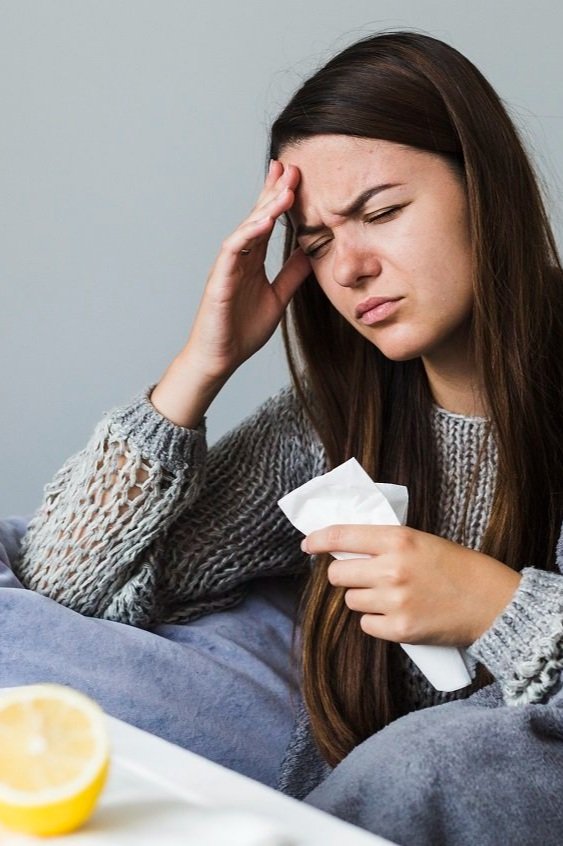Antibiotic Resistance: The Flaws of the ‘Cure-All’ Treatment
By Science and Environment Editor Leah Moynihan
A mother brought her young son to the doctor to treat his sore throat. She was not worried; it did not seem serious. However, the boy had caught a mild cold earlier in the year, which was treated with antibiotics even though it was a virus. The antibiotics were given to him before by the doctor as a ‘cure all’ treatment, and now he was paying the price. This was a bacterial infection. After a few days, his condition worsened. He complained that his throat continued to itch, and his tonsils were inflamed. The drugs were not working; the bacteria became resistant. Therefore, they were almost unbeatable as they took over the young boy's body.
Most antibiotics are safe, when they are used according to the instructions. Antibiotics have revolutionised health care and saved millions of lives. They have allowed many medical practices, such as surgery and neonatal care, to become possible. However, antibiotics are often misused. At least 5 million people were killed due to antimicrobial resistance in 2019. On rare occasions, if a patient needs a second round of antibiotics because the first round did not work, they could experience extreme side effects such as organ failure. People of every age group are affected in some way. Therefore, antimicrobial resistance is one of the largest threats to public health and to global disease control.
Antimicrobial resistance occurs when germs adapt the ability to fight against the drugs that are supposed to get rid of them (i.e. they become resistant). The antibiotics pressure the germs to adapt. They develop resistance mechanisms to survive and defend themselves against future doses of antibiotics. They take over and multiply, sometimes threatening the life of their host. These germs can share their resistance mechanisms with other germs that have never been exposed to antibiotics before. Once antibiotics become ineffective, we struggle to treat infections and public health is at risk.
A 2022 US special report found that the threat of antimicrobial-resistant infections has increased. This rise is driven primarily by the overuse of antibiotics. Antibiotics do not work on viruses, such as flues and colds, as well as on some ear, throat, and chest infections. Therefore, antibiotics should never be taken if you do not need them. When they are used regularly to treat minor conditions, they will be more likely to become ineffective against serious infections. The more times a bacterium meets a familiar antibiotic, the more it learns to adapt itself to survive against it. Furthermore, antibiotics kill harmful germs but they can also destroy germs that guard our bodies against infection. This allows strains of bacteria that are resistant to many types of antibiotics, called superbugs, to take over.
Bacteria can become resistant to every antibiotic (multidrug resistance), however resistance to just one antibiotic is a serious problem. Untreatable infections can lead to the need for costly or potentially toxic treatments. The patients’ health suffers, and extended hospital stays may be required. MRSA is a growing threat caused by the overuse of antibiotics.
Staphylococcus aureus can sometimes bring about infections and when it is resistant to methicillin it is called methicillin-resistant Staphylococcus aureus. It usually lives harmlessly on the skin however it can cause serious infection if it enters the blood. It is usually spread through hospitals, and it is more likely to cause infection in vulnerable patients who are already sick. MRSA is considered a superbug, as many antibiotics that were used to treat it no longer work.
An example of a major disease that is caused by a parasite rather than a germ is malaria. Malaria control depends on antimalarial drugs that kill the parasites inside the blood. However, resistance to antimalarials is a considerable problem, resulting in high mortalities. It is especially a threat to developing nations. Nearly 90 per cent of worldwide malaria mortalities occur on the African continent. Some families do not have enough money to spend on expensive drugs, so they must rely on cheaper less effective options. Resistance has appeared against almost all classes of antimalarial drugs, while resistance to older drugs has been prevalent for many decades. Malaria control has improved greatly however this progress may be lost.
Two of the biggest health issues of this century may be working together. As annual rainfall increases and becomes more sporadic, the high levels of moisture in the air favour microbial growth. These conditions also help the growth of antibiotic resistant bacteria. Sewage overflow caused by flooding can contaminate drinking water. Similarly, increasing incidences of natural disasters, such as wildfires and hurricanes, mean that more people become injured and use antibiotics. Researchers have also explored the possibility of an increase in air temperature causing an increase in higher rates of antibiotic resistance. However, research is still ongoing as this is an emerging trend.
Similarly not well understood, disinfectants have been linked to antimicrobial resistance. They are frequently used in the food industry to clean food preparation areas from bacteria and prevent the spread of dangerous pathogens. They kill bacteria effectively however they can also promote ‘biocide’ resistance through mutation. Disinfectants can be overused in homes, encouraged by misleading advertisements. Sterilising healthcare equipment is essential, however if it is not carried out properly resistant bacteria can rapidly spread. Superbugs may be selected, increasing the problem. Even though it is not as common as antibiotic resistance, disinfectants have been recorded causing resistant bacteria outbreaks. Cleaning inorganic or organic materials on the surface before the disinfectant is applied can help with this problem. However, this is not just occurring in humans.
Like humans, antibiotic resistance in farm animals is caused by the abuse of antibiotics.
According to the journal Nature, 73 per cent of antibiotics globally are given to domestic animals. Antibiotics are used to protect animal welfare, as well to ensure that our food is safe. However, farmed animals can become potential sources of antimicrobial resistance. They can be overused and given to animals to prevent disease, as the animals are often housed in unhygienic conditions. They can also be given to promote growth. Resistant bacteria from the animals’ faeces are spread as fertiliser and can be absorbed by the crops that we consume. This can then spread to humans from food. Furthermore, our water supply can be a source of antibiotic resistant bacteria as animal excretory fluids can enter the groundwater. Therefore, we must acknowledge that our interactions with the environment have a large impact.
The ‘One Health’ perspective acknowledges that the health of all humans is interconnected with each other, animals, and the environment. This approach to disease control is trans-disciplinary, involving the veterinary and public health sectors. It works at local, national, and global levels with researchers and world leaders working together. Since the outbreak of Covid-19, it has received much attention. It is in place to predict and prevent global threats to human health. Furthermore, Ireland established the National Action Plan on Antimicrobial Resistance 2021-2025. This focuses on education, research, sustainable investment in new medicines, as well as infection control measures.
Therefore, antibiotic resistance should not cause fear or panic. There are many ways in which everyday citizens can prevent the spread of antibiotic resistance. The agricultural sector needs to be pressured to limit its use of antibiotics. As consumers, we should not forget the power that we hold. Other solutions include ensuring a healthy microbiome as the body needs to be strong enough to fight off infection. Not finishing the treatment course of antibiotics is a major problem, so antibiotics should always be taken according to the doctors' instructions. However, only taking antibiotics when you really need them is the best solution against antibiotic resistance. Lastly, ongoing interdisciplinary studies are crucial as research into new preventive measures will ensure that drug resistance does not become uncontrollable.




